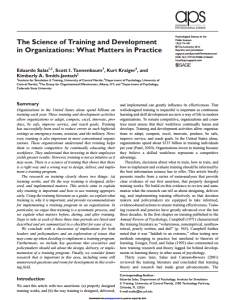January is typically when we try to pause for a moment to reflect on where we have been, where we are, and where we are going. We look at this journey not only from the perspective of individuals, but also from the perspective of our respective organizations and the entire L&D industry.
Depending on the exact nature of each person’s work in L&D, a year can see an instructional designer develop and deploy countless deliverables for use in instructor-led training, eLearning, blended learning, and online help systems. They may produce videos, quick reference materials, games, activities, test questions, exercises, animations, graphics, and a number of other items to support learning objectives.
For another instructional designer, a year can barely contain a detailed job/task analysis and curriculum recommendation for a highly technical job role in a heavy industrial situation. This designer may only produce a grand total of one deliverable by the end of the year and that deliverable can layout the work to be done for several years to come.
Most of us fall somewhere in between on this continuum with plenty of work to keep us busy, and little time to sit and really consider new ideas you have seen or read about, and how they might be used in your organization. Retiring old methods, software, processes, and materials also takes time away from development and the voids left by those items need to be filled with new ideas, new software, and new processes.
In the interest of helping this process along, #chat2lrn invites you to take an hour at 8am ET/10am CT/4pm GMT on Thursday, January 26 to join us to discuss the L&D trends that have seen better days and are on the way out, the trends and ideas that are currently working for us, and finally what we envision on the L&D horizon. We will clean house, take stock, and think about what will be filling the L&D shelves in years to come.









